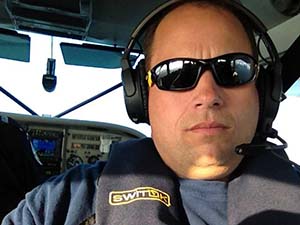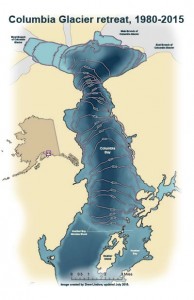The council has three interns, two college and one high school, hard at work on projects this spring.
Online Observer
Jeremy Talbott: A life on the water inspires stewardship of the sea
Volunteer Spotlight:

Jeremy Talbott, member of the council’s Port Operations and Vessel Traffic System Committee, is enthusiastic about his new hometown. He moved to Valdez with his wife Keri and their two daughters in May of 2014 to become the new harbormaster for the city.
“I didn’t even know where Valdez was,” Talbot said. “But it was in Alaska.”
Talbott had dreamed of moving to Alaska for a while. He applied for the Homer Harbormasters job several years ago, and later almost got a position in Juneau as Harbormaster. Talbott was disappointed, but Juneau’s port director told him about the opening in Valdez.
“In hindsight, I’m really glad I got Valdez instead of Juneau,” he says. “I love it. I hit the lottery.”
Swanson resigns as head of citizens’ council
Mark Swanson has resigned as executive director of the Prince William Sound Regional Citizens’ Advisory Council. His resignation was unanimously accepted by the council board November 24 during a telephonic meeting.
While the board works to seek a permanent replacement, Donna Schantz, the organization’s director of programs, will serve as acting executive director.
“On behalf of the council, I’d like to thank Mark for his service to the organization,” said board President Amanda Bauer. “We wish him the very best in the future.”
Researchers say ice drifting into tanker lanes will be smaller but more numerous in future
By Alan Sorum
Council Project Manager

Columbia Glacier, located in the Chugach Mountains of Alaska, is losing mass faster than almost any other glacier in the state. Columbia is a tidewater glacier, a type of valley glacier that flows into the ocean.
In 1996, the council began a project to monitor and analyze the calving and drift of ice from the glacier, through Columbia Bay, and into Prince William Sound. The ice sometimes drifts into the established tanker shipping lanes. Loaded tankers leave their designated lanes to avoid this ice.
In 2012, the council began to update information developed in the original 1996 project to determine the future risk of Columbia Glacier icebergs to the tanker traffic. Funded by the council, researchers W. Tad Pfeffer and Shad O’Neel studied several aspects of ice loss at Columbia Glacier.
The study found that icebergs discharged by the glacier during the retreat have largely been contained within the moraine shoal, located at the position of the terminus prior to the glacier’s retreat. The fraction of icebergs that cross the moraine and enter Prince William Sound proper still pose a potential hazard to ship traffic in the Sound.